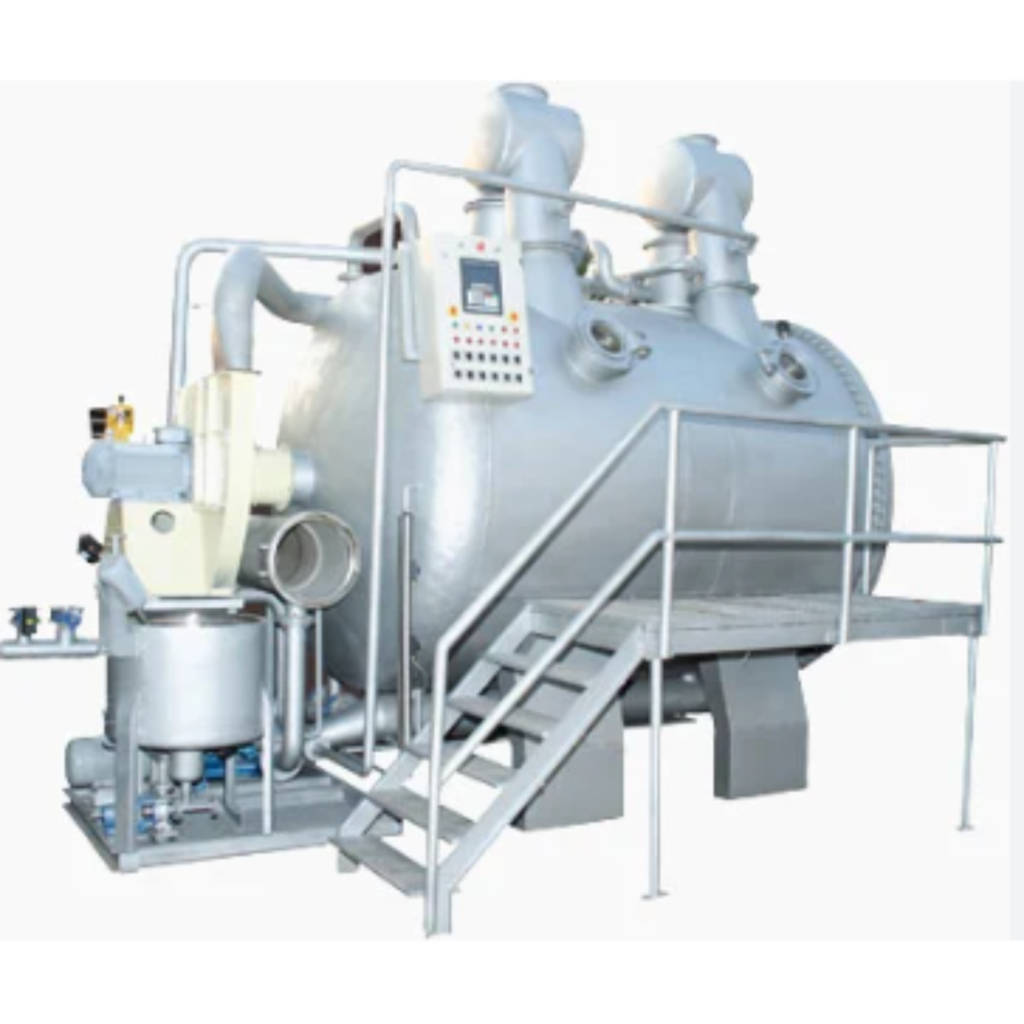Textile Technology/Products
Horizontal Tubular Dyeing Plant
Working Principles: Horizontal Tubular Dyeing Plant, referred as an H.T.H.P. dyeing machine, is textile dyeing apparatus used in dyeing of woven and knitted fabric rolls.
It is widely used in the textile industry for large-scale dyeing operations. The working principles of an H.T.H.P. dyeing machine involve the following key aspects:
Design: The machine typically consists of a horizontal cylindrical vessel or tube made of stainless steel or other corrosion-resistant materials. The fabric rolls are loaded onto specially designed carriers or trolleys that can be inserted into the dyeing vessel.
Dye Bath Preparation: A dye bath is prepared by adding water, dye stuff, and any required chemicals to the dyeing vessel. The dye bath is heated to the desired temperature using a heating system, which can involve steam or electric heating elements.
Loading Fabric: Fabric rolls, often wound on perforated spindles or carriers, are loaded into the machine. The fabric must be evenly distributed to ensure uniform dyeing.
Agitation: Agitation mechanisms, such as paddles or rotating arms, are used to move the fabric rolls and ensure even distribution of the dye liquor. Agitation is crucial for uniform dye penetration.
Dyeing Process: The fabric rolls remain in the dye bath for a specified duration, allowing the dye to permeate the fibers and achieve the desired color. Temperature and dyeing time are closely monitored and controlled.
Rinsing and Finishing: After dyeing, the fabric rolls are removed from the dye bath, rinsed to remove excess dye, and subjected to post-treatment processes such as washing, drying, and finishing.
Quality Control: Throughout the process, the color and quality of the dyed fabric are carefully monitored and controlled to ensure uniformity and consistency.

Advantages:
High Capacity: H.T.H.P. dyeing machines are designed for large production batches, making them efficient for industrial-scale textile dyeing.
Uniform Dyeing: These machines ensure uniform and consistent coloration of fabric rolls, resulting in high-quality results.
Flexibility: They can dye a wide range of fabric types, including natural and synthetic fibers, and are suitable for various applications, from apparel to home textiles.
Precise Control: Temperature, agitation, and dyeing parameters can be precisely controlled, allowing for customization and color matching.
Resource Efficiency: Many modern H.T.H.P. dyeing machines are designed for water and energy efficiency, reducing operational costs and environmental impact.
Disadvantages:
Capital Investment: The initial cost of purchasing and installing an H.T.H.P. dyeing machine can be substantial.
Maintenance: Regular maintenance is required to ensure the proper functioning of the equipment.
Environmental Impact: While they are designed for efficiency, these machines still generate wastewater that may require treatment and disposal

Applications: Horizontal Tubular Dyeing Plants are commonly used in the textile industry for various applications, including:
Apparel: Dyeing fabric rolls for clothing, fashion, and apparel production.
Home Textiles: Dyeing fabric rolls for bed linens, towels, upholstery fabrics, and curtains.
Technical Textiles: Dyeing fabrics for industrial and specialized applications, such as automotive textiles and medical textiles.

Summary: Horizontal Tubular Dyeing Plants (H.T.H.P. dyeing machines) are specialized equipment used for large-scale textile dyeing operations.
They ensure uniform and consistent coloration of fabric rolls, offering advantages in terms of high capacity, flexibility, and precise control.
However, they come with initial capital costs, maintenance requirements, and environmental considerations.
These machines play a crucial role in the textile industry for producing dyed fabrics for a wide range of applications.


 Sales & Marketing:
Sales & Marketing:  Service Supports:
Service Supports:  Website:
Website: 